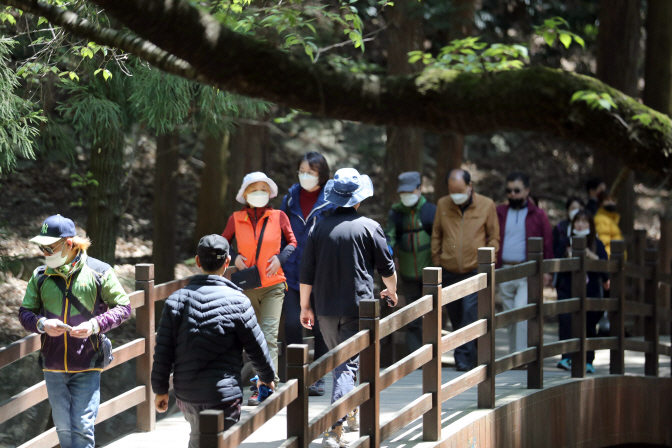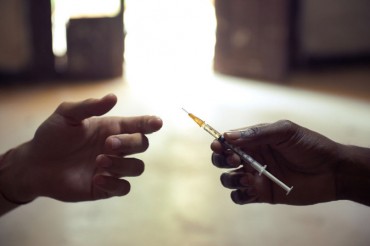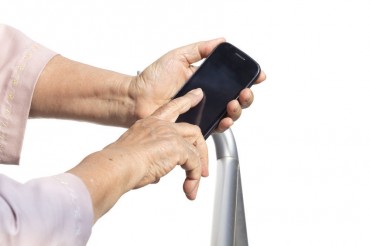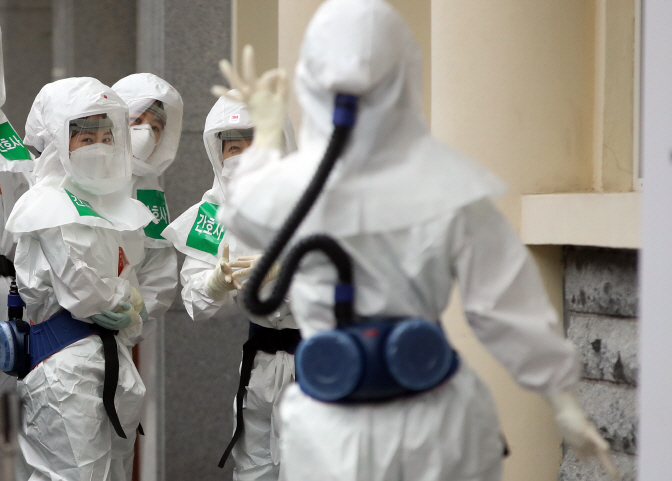
A medical worker gestures toward her colleagues as she enters a special ward for coronavirus patients at Keimyung University Daegu Dongsan Hospital in the southeastern city of Daegu on April 17, 2020. (Yonhap)
SEOUL, April 27 (Korea Bizwire) — After a three-month struggle, South Korea’s coronavirus curve has markedly flattened on the back of nimble and massive virus testing and strict social distancing measures.
Without draconian lockdowns and restrictions, the country emerged from one of the worst virus-hit nations to become the most successful country to curb the spread of COVID-19.
Now, the country is preparing for another potential virus infection wave while still remaining vigilant against cluster infections and cases coming in from overseas.
“We believe it is inevitable for us to see the novel coronavirus becoming a seasonal illness like the flu,” said Kwon Jun-wook, deputy director of the Korea Centers for Disease Control and Prevention (KCDC).
“The next wave of the virus could happen anytime.”
South Korea has reported only a few new COVID-19 cases for nearly a month since identifying its first case on Jan. 20 from a Chinese woman.
But virus cases in the country exploded in late February after health authorities detected massive infections tied to the Shincheonji Church of Jesus, a minor religious sect that claims to have more than 210,000 followers.
The country’s daily rise of new COVID-19 cases reached its peak on Feb. 29 with 909 new cases, with cluster infections at churches, hospitals and workplaces also raising concerns over community spread.
South Korea, however, started to see a slowdown in new cases in early March, supported by its massive testing capability and creative anti-virus solutions like drive-thru clinics.
The country managed to further flatten the curve of new infections by starting its strict social distancing campaign on March 22, while shifting its focus to imported cases.
Since April 1, South Korea has mandated all arrivals from overseas self-quarantine for 14 days.
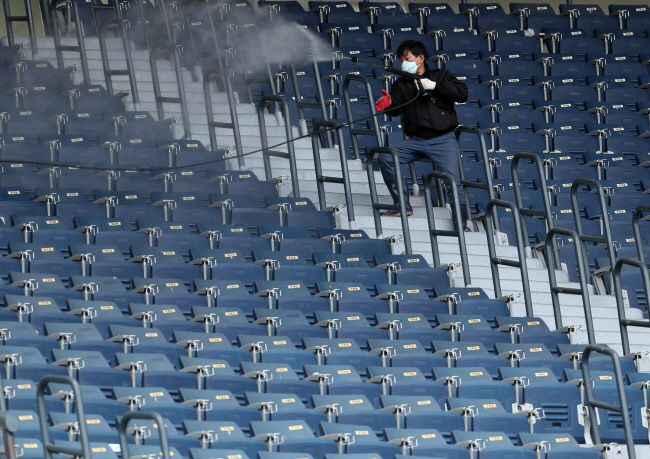
A stadium official disinfects seats at Jamsil Baseball Stadium in Seoul in this photo taken April 24, 2020. (Yonhap)
With such efforts, South Korea’s new infections have hovered around 10 for the last eight days.
The country’s total COVID-19 cases stood at 10,728, but over 80 percent, or 8,717 of them, have been released from quarantine after making full recoveries.
“We are seeing a sharp decline in new infections recently, and I think this is a result of people actively cooperating with the government’s quarantine scheme,” said Jeon Byung-yul, a former director of the KCDC.
Health authorities said that although recent figures on the new coronavirus appear to be positive, they cannot let their guard down because they expect a long-term battle against the pandemic.
“We are still seeing a grave situation overseas,” said Vice Health Minister Kim Ganglip. “It requires a lot of time to develop vaccines and treatments, so we need to be ready for a long-term battle.”
Experts warned that South Korea could see another wave of COVID-19 infections after this summer.
“The novel coronavirus is highly infectious like seasonal influenza, so it will not be easy to eradicate,” said Kim Woo-joo, a professor of infectious medicine at Korea University Guro Hospital in Seoul.
“In the winter, we could see a large scale of infection because people tend to stay indoors and become unwilling to ventilate, while the virus remains more stable in cold, dry conditions.”
With new virus infections showing clear signs of a slowdown, experts said this will be the right time to check and retool the country’s medical and quarantine system before facing another big wave of COVID-19 outbreaks.
Yoon Tae-ho, a senior health ministry official, said the country is already preparing for the next round of the big battle against the new coronavirus.
“We are checking equipment used for the treatment of patients in critical condition, such as extracorporeal membrane oxygenation (ECMO) and negative pressure hospital beds,” he said.
“We also have a plan to secure additional medical resources since we could face larger virus infections than we saw in Daegu.”
Until coronavirus vaccines and treatments are developed and become available, South Korea is expected to keep its social distancing measures, according to experts.
The country has hinted at switching to an “everyday life quarantine” after its extensive social distancing drive ends on May 5.
The new quarantine scheme allows people to engage in a certain level of economic and social activities but does not discard social distancing measures that have been pivotal to slow the spread of the novel coronavirus here.
“We are still in a disaster situation where the outbreak of the new coronavirus could explode at anytime if our social distancing campaign gets loosened,” said KCDC chief Jeong Eun-kyeong.
“No country has yet to control COVID-19 after lifting social distancing or social lockdowns.”
Experts said the biggest enemy for South Korea at this moment is complacency.
“People know COVID-19 is very contagious, but they also have this belief that they are not going to get the virus,” said Kim Sung-han, a doctor at Asan Medical Center in Seoul.
“Those kinds of thoughts are the most dangerous thing in controlling infectious diseases.”
(Yonhap)


